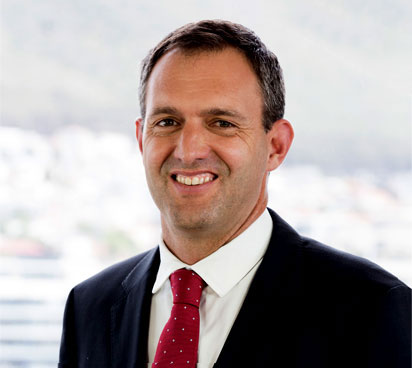Is the glass half full or half empty? Are you even looking at the right glass?

Related links
No related linksArticle highlights
- Always seeing the glass half empty is not only depressing, it can dramatically hamper progress
- This glass-half-full perspective allows us to see that although things are not necessarily great, they are improving
- It is key to see the glass as it is, neither too pessimistically or too optimistically
When I heard that Bill Gates, the legendary tech entrepreneur and philanthropist was presenting every one of the four million US students graduating in 2018 with a copy of Hans Rosling’s Factfulness, I rushed out and bought myself a copy. Gates has called it “one of the most important books I’ve ever read – an indispensable guide to thinking clearly about the world.”
Rosling, a Swedish doctor and professor of international health was working on the book when he died of cancer in 2017 and the book was completed by his son Ola and daughter-in-law Anna.
“Things are bad, and feels like they are getting worse, right?” Rosling writes. “War, violence, natural disasters, corruption. The rich are getting richer and the poor are getting poorer; and we will soon run out of resources unless something drastic is done. That is the picture most people in the West see in the media and carry around in their heads.”
“I call it an overdramatic worldview. It’s stressful and misleading … perhaps not on every measure, or every single year, but step by step, year by year, the world is improving”.
One of the tools Rosling developed to illustrate this was a simple set of 13 multiple choice questions about changes in poverty, disease, levels of education, demographics, life expectancy and climate. He conducted the test hundreds of times in different countries and to massively varied audiences. Without fail, the results were horrendous. And everywhere the results were the same: People felt the world was worse or not improving as much as the facts show it is.
Always seeing the glass half empty is not only depressing, it can dramatically hamper progress – which is why understanding the facts when developing a worldview is incredibly important. To this end, the Roslings have developed a wonderful website http://www.gapminder.org/ which is treasure trove of insightful facts.
The current narrative in South Africa is extremely negative. With the country slipping into a recession, the currency weakening significantly, much fear around expropriation of land without compensation and the Zondo Commission once again highlighting the extent of widespread corruption and hollowing out of capacity at many key state institutions, this sentiment is understandable – but it is also the glass half-empty view.
Pause for a second and remember where we were this time last year. Just imagine where we might have been had the ANC electoral vote not gone the way it had. Despite the frustration that progress could be and should be faster, we should not forget what has been achieved in the past nine months. Slow but steady progress is visible - making better appointments, one-by-one getting rid of those implicated, all the time walking a political tight-rope. My guess is that most of us would have taken this scenario in a flash if it was offered to us last year. This glass-half-full perspective allows us to see that although things are not necessarily great, they are improving.
In life, there are significant advantages to see the glass half-full. It is less stressful, more fun and optimistic people tend to be happier, more successful, are more pleasant to be around and contribute positively to society.
In investing, it is important to look at the facts realistically balancing both the risk and the potential for growth. It is key to see the glass as it is, neither too pessimistically or too optimistically.
I encourage you to take the Rosling’s test. It really opened my eyes.

For a better experience of the Nedgroup Investments website, please try the latest version of these browsers


